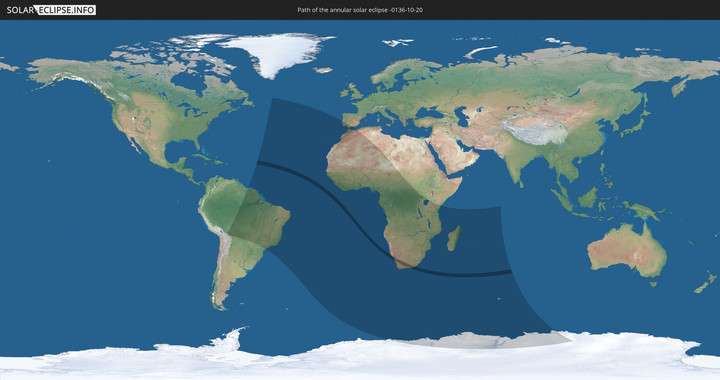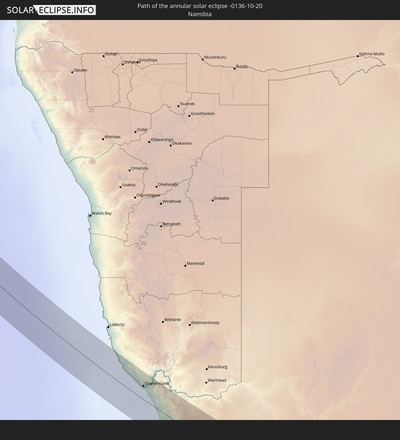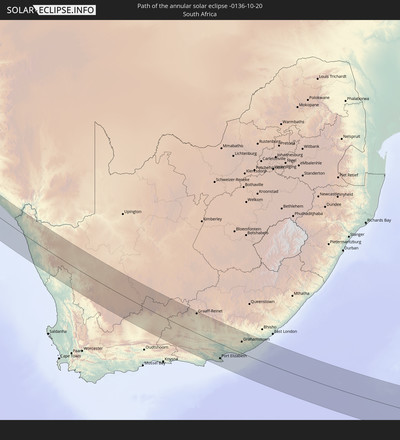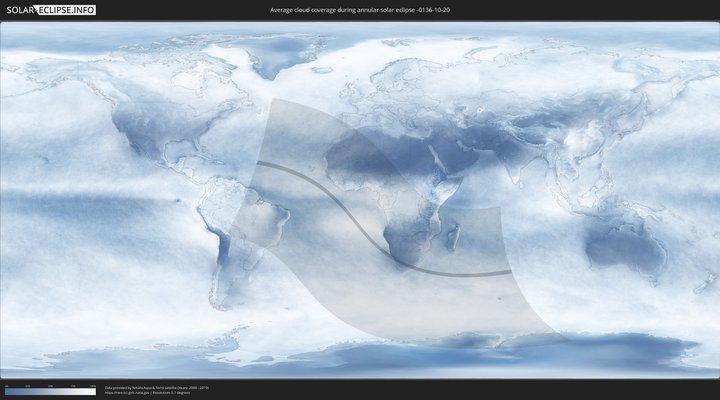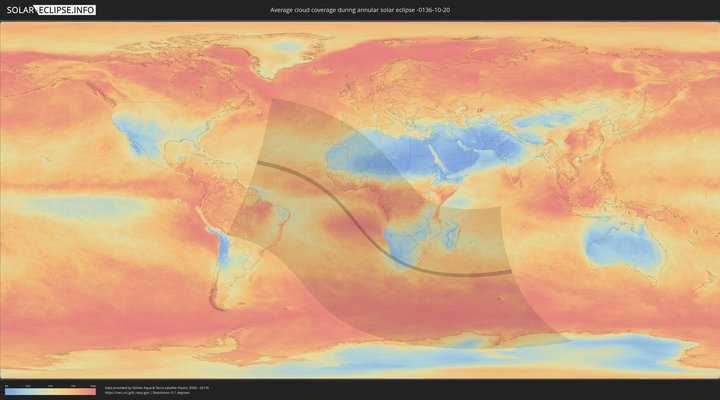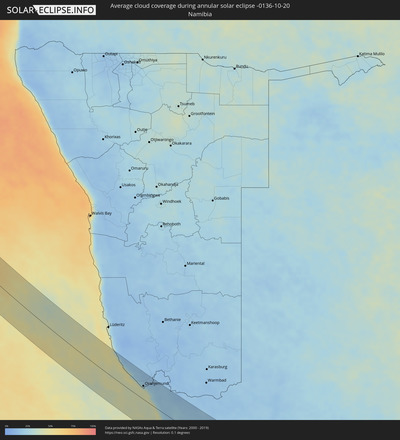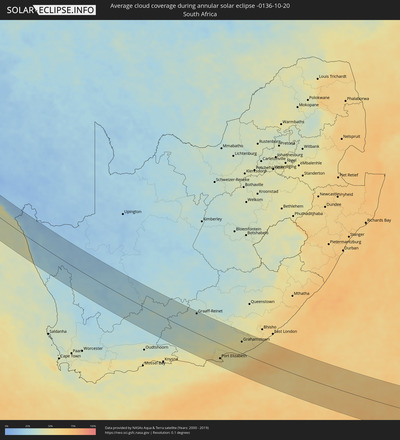Annular solar eclipse of 10/20/-0136
| Day of week: | Tuesday |
| Maximum duration of eclipse: | 04m26s |
| Maximum width of eclipse path: | 157 km |
| Saros cycle: | 70 |
| Coverage: | 95.7% |
| Magnitude: | 0.9574 |
| Gamma: | -0.1476 |
Wo kann man die Sonnenfinsternis vom 10/20/-0136 sehen?
Die Sonnenfinsternis am 10/20/-0136 kann man in 62 Ländern als partielle Sonnenfinsternis beobachten.
Der Finsternispfad verläuft durch 2 Länder. Nur in diesen Ländern ist sie als annular Sonnenfinsternis zu sehen.
In den folgenden Ländern ist die Sonnenfinsternis annular zu sehen
In den folgenden Ländern ist die Sonnenfinsternis partiell zu sehen
 Antarctica
Antarctica
 Brazil
Brazil
 Bolivia
Bolivia
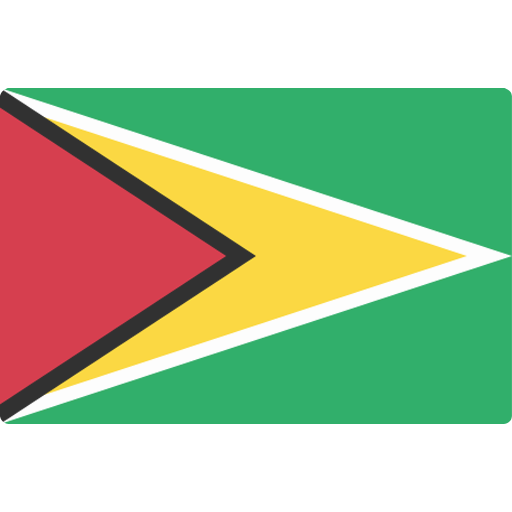 Guyana
Guyana
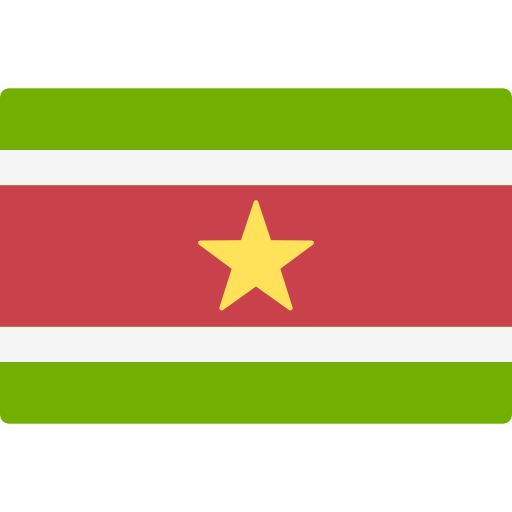 Suriname
Suriname
 French Guiana
French Guiana
 Portugal
Portugal
 Cabo Verde
Cabo Verde
 Spain
Spain
 Senegal
Senegal
 Mauritania
Mauritania
 The Gambia
The Gambia
 Guinea-Bissau
Guinea-Bissau
 Guinea
Guinea
 Saint Helena, Ascension and Tristan da Cunha
Saint Helena, Ascension and Tristan da Cunha
 Sierra Leone
Sierra Leone
 Morocco
Morocco
 Mali
Mali
 Liberia
Liberia
 Algeria
Algeria
 Ivory Coast
Ivory Coast
 Burkina Faso
Burkina Faso
 Gibraltar
Gibraltar
 Ghana
Ghana
 Togo
Togo
 Niger
Niger
 Benin
Benin
 Nigeria
Nigeria
 Bouvet Island
Bouvet Island
 Equatorial Guinea
Equatorial Guinea
 São Tomé and Príncipe
São Tomé and Príncipe
 Cameroon
Cameroon
 Gabon
Gabon
 Libya
Libya
 Republic of the Congo
Republic of the Congo
 Angola
Angola
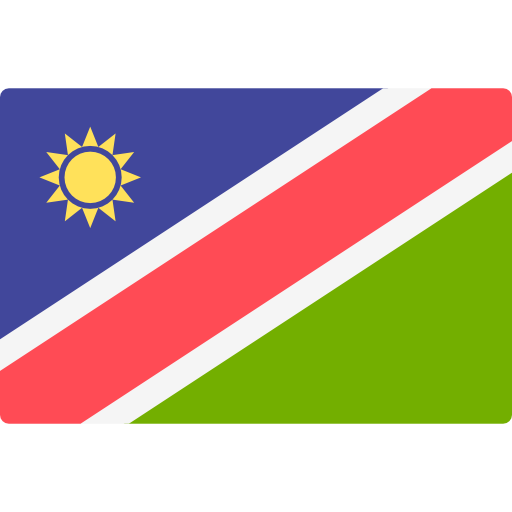 Namibia
Namibia
 Democratic Republic of the Congo
Democratic Republic of the Congo
 Chad
Chad
 Central African Republic
Central African Republic
 South Africa
South Africa
 Botswana
Botswana
 Sudan
Sudan
 Zambia
Zambia
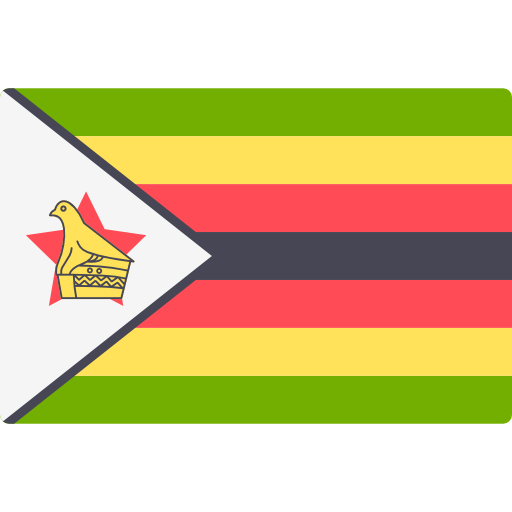 Zimbabwe
Zimbabwe
 Lesotho
Lesotho
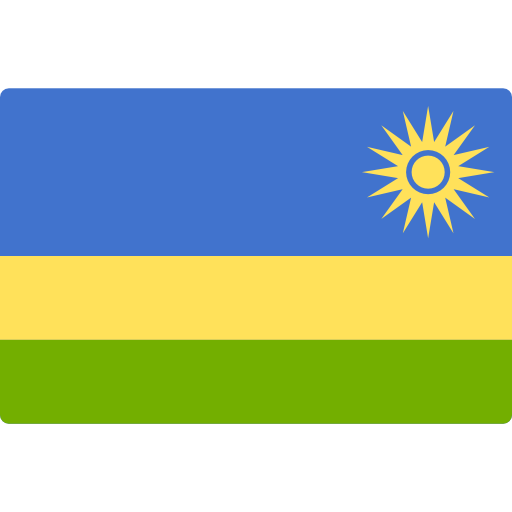 Rwanda
Rwanda
 Burundi
Burundi
 Tanzania
Tanzania
 Uganda
Uganda
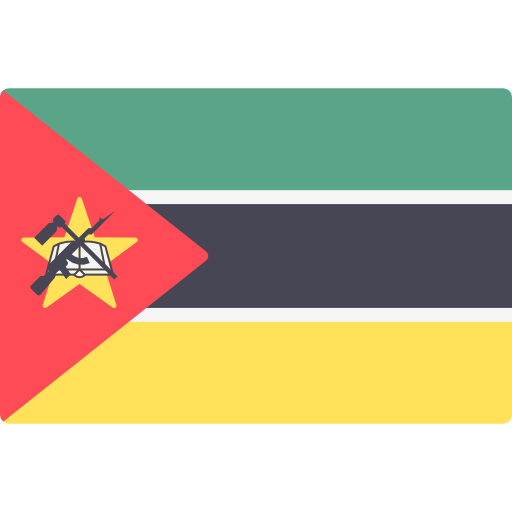 Mozambique
Mozambique
 Swaziland
Swaziland
 Malawi
Malawi
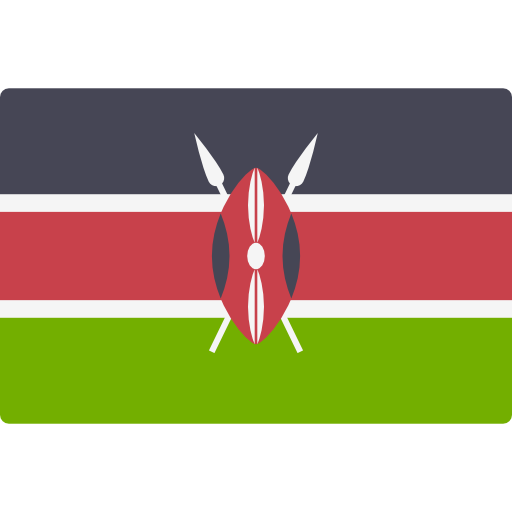 Kenya
Kenya
 French Southern and Antarctic Lands
French Southern and Antarctic Lands
 Madagascar
Madagascar
 Comoros
Comoros
 Mayotte
Mayotte
 Seychelles
Seychelles
 Réunion
Réunion
 Mauritius
Mauritius
 Heard Island and McDonald Islands
Heard Island and McDonald Islands
How will be the weather during the annular solar eclipse on 10/20/-0136?
Where is the best place to see the annular solar eclipse of 10/20/-0136?
The following maps show the average cloud coverage for the day of the annular solar eclipse.
With the help of these maps, it is possible to find the place along the eclipse path, which has the best
chance of a cloudless sky.
Nevertheless, you should consider local circumstances and inform about the weather of your chosen
observation site.
The data is provided by NASAs satellites
AQUA and TERRA.
The cloud maps are averaged over a period of 19 years (2000 - 2019).
Detailed country maps
Cities inside the path of the eclipse
The following table shows all locations with a population of more than 5,000 inside the eclipse path. Cities which have more than 100,000 inhabitants are marked bold. A click at the locations opens a detailed map.
| City | Type | Eclipse duration | Local time of max. eclipse | Distance to central line | Ø Cloud coverage |
 Oranjemund, Karas
Oranjemund, Karas
|
annular | - | 13:40:26 UTC+01:30 | 39 km | 43% |
 Springbok, Northern Cape
Springbok, Northern Cape
|
annular | - | 13:44:53 UTC+01:30 | 16 km | 22% |
 Calvinia, Northern Cape
Calvinia, Northern Cape
|
annular | - | 13:50:46 UTC+01:30 | 60 km | 28% |
 Beaufort West, Western Cape
Beaufort West, Western Cape
|
annular | - | 13:56:47 UTC+01:30 | 18 km | 29% |
 Willowmore, Eastern Cape
Willowmore, Eastern Cape
|
annular | - | 13:59:15 UTC+01:30 | 73 km | 36% |
 Graaff-Reinet, Eastern Cape
Graaff-Reinet, Eastern Cape
|
annular | - | 14:00:06 UTC+01:30 | 74 km | 35% |
 Uitenhage, Eastern Cape
Uitenhage, Eastern Cape
|
annular | - | 14:02:51 UTC+01:30 | 45 km | 53% |
 Kirkwood, Eastern Cape
Kirkwood, Eastern Cape
|
annular | - | 14:02:38 UTC+01:30 | 6 km | 47% |
 Port Elizabeth, Eastern Cape
Port Elizabeth, Eastern Cape
|
annular | - | 14:03:15 UTC+01:30 | 54 km | 53% |
 Somerset East, Eastern Cape
Somerset East, Eastern Cape
|
annular | - | 14:02:20 UTC+01:30 | 68 km | 43% |
 Grahamstown, Eastern Cape
Grahamstown, Eastern Cape
|
annular | - | 14:04:23 UTC+01:30 | 44 km | 53% |
 Port Alfred, Eastern Cape
Port Alfred, Eastern Cape
|
annular | - | 14:05:10 UTC+01:30 | 27 km | 54% |
